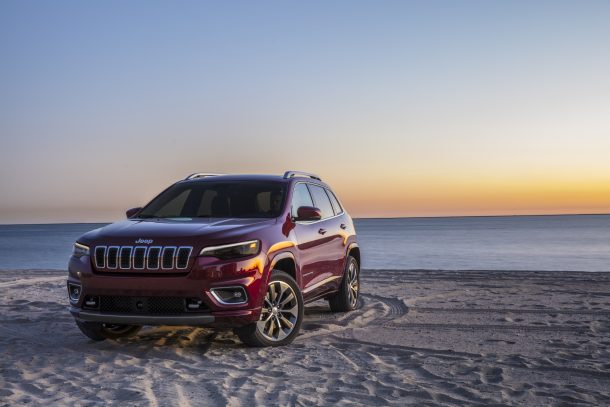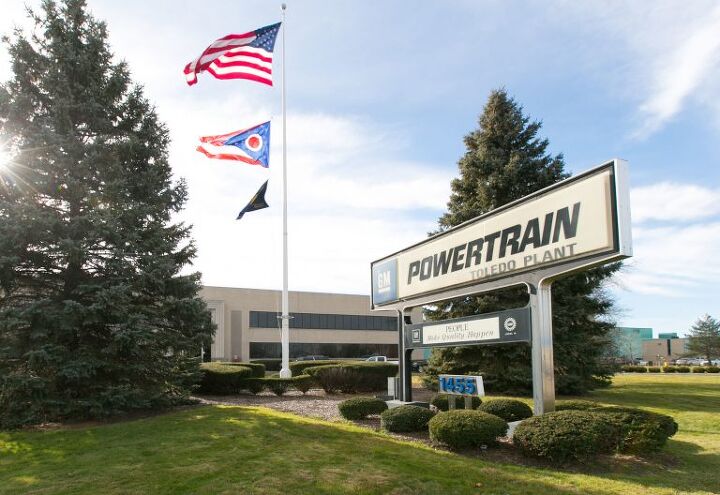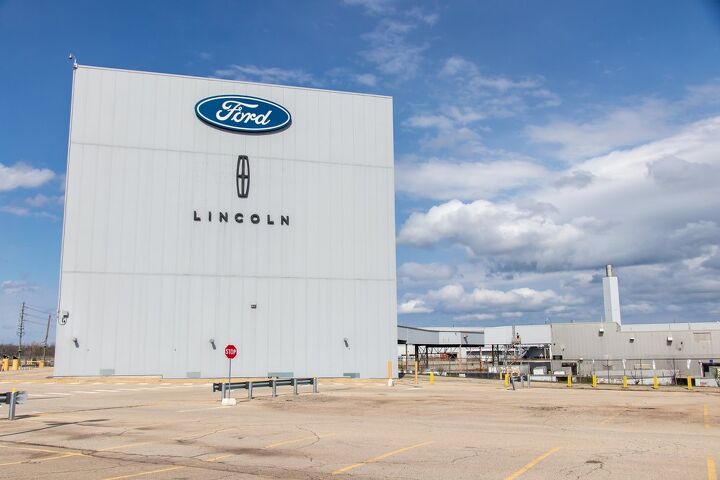#FactoryNews
Mercedes Spending $59 Million to Build ESprinter in U.S.
On Tuesday, Mercedes announced it would be pouring roughly $59 million (€50 million) to build the all-electric Sprinter van at three facilities. One of them will is the American MBV factory in Ladson, South Carolina, with the remaining two sites naturally situated in Düsseldorf and Ludwigsfelde, Germany.
Over 200,000 Sprinter and Metris model vans have been assembled in the United States since 2006, though the automaker had actually been using the state to avoid the chicken tax for much longer. Considering the region is the second-largest market for Sprinter vans, Mercedes is not interested in dissolving its American commitments either. The investment will be spread across the three facilities for the necessary tooling to build the EV variant the automaker already started selling in Europe.
Semiconductor Shortage Delays More Automobiles
The industry is having to stall more plants to contend with the semiconductor shortage that’s currently making it more difficult for you to get everything from a smartphone on up to your next vehicle. Ford Motor Co. recently informed employees that its Dearborn truck plant (easily one of its most profitable facilities) would need to be idled through the weekend to create a buffer for semiconductor chips. Worse yet, it’s not the first time the automaker has had to stall output of the F-150 this year. Ford has also started manufacturing trucks without all the necessary components, stating it would hold vehicles for a few weeks to account for supply chain delays.
Meanwhile, Chrysler has made a similar announcement about its minivan output as Windsor Assembly faces another chip deficit. Unifor Local 444 recently stated that the facility would be staring down the barrel of a four-week shutdown starting next week. Considering Chrysler’s minivans literally just dealt with a three-week stall over the chip shortage, union workers are understandably upset. Days earlier, General Motors Canada also announced that its CAMI plant in Ingersoll, Ontario, will likely remain idle until the middle of April.
SEAT Positioned to Head Development on VW Group's Littlest EVs
Despite Volkswagen having snatched away MEB development duties planned for SEAT, it’s apparently happy to give the Spanish brand an opportunity to head projects for the MEB-Lite platform for the majority of VW Group. The resulting vehicles should all be compact battery electric or hybrid cars, and potentially very low in fat, sugar, or carbs based on the agreed-upon naming conventions.
Better still, Volkswagen has claimed these vehicles should begin arriving by 2025 yielding MSRPs below €20,000 — which is roughly $24,000 USD. We’re not willing to rule anything out for our market, especially given the segment is relatively new. But North America isn’t prone to receiving exceptionally small European imports, so don’t hold you’re breath if you happen to be living within the region and eager to buy an EV smaller than the I.D.4.
Detroit Revises Assembly Routine Due to Semiconductor Shortage
On Thursday, Ford issued a statement explaining that some of its vehicles will be manufactured without the electronic modules dependent on semiconductors. While the automaker faulted the global semiconductor shortage, it also made mention of the winter storms from last month. A few shifts will reportedly be cut until supply chains stabilize while other lines will be constructing vehicles minus some electronics. The plan is for Blue Oval to hold onto them until more chips come in, minimizing production losses.
General Motors proposed a similar solution last week and has since started building 2021 light-duty full-size pickups without a fuel management module.
“Due to the global shortage of semiconductors impacting the global auto industry, we are making Active Fuel Management/Dynamic Fuel Management unavailable on certain 2021 model year full-size trucks,” said GM spokesperson Michelle Malcho.
Stellantis Introducing 84 Hour Work Week in Sterling Heights
Stellantis is reportedly bringing back a controversial policy that would have skilled trade workers doing 12 hour days for 7 days a week as a way to maximize shift coverage. The original arrangement had staff pushing long hours only to be rewarded with a full week off. But it was temporarily nixed after workers complained about the schedule and fretted over how the change might impact benefits. An alternative schedule prioritizing flexibility was created, though the automaker (still owned by FCA at the time) stressed that it needed more tradespeople working on the weekends to help avoid production gaps.
The 84 hour week is now back, with Stellantis testing it out at Sterling Heights Assembly, where the Ram 1500 is manufactured. However, it doesn’t appear to have grown in popularity.
Stellantis Laying Off 150 Jeep Employees in Illinois
Jeep is laying off 150 workers that would have otherwise been employed at its Belvidere Assembly Plant, which actually produces the Jeep Cherokee instead of the long defunct, full-size Plymouth. Based on the timing, this decision appears to have something to do with the FCA-PSA Group merger that formed Stellantis.
Ford Says All European Sales Will Be Battery Only by 2030
Another day, another automaker making promises about electric vehicles. Today’s company is Ford, which has vowed to make all European automotive sales electric-only by 2030.
This comes with the footnote of having the ability to soften that promise with plug-in hybrids. But, since this is all about corporate virtue signaling, that’s not what automakers tend to lead with. The industry wants to focus upon net-zero carbon emissions, sustainability, and other buzz terms that allow something to sound environmentally friendly without our needing to check if that’s actually the case. By the time 2030 comes around, only a few dozen people are even going to remember these promises if they’re not kept anyway — giving companies another opportunity to move the goalpost.
GM Pouring $75 Million Into Toledo Transmission Plant
General Motors will reportedly be making a $75 million investment into Toledo Transmission later this year. This follows an earlier $39 million investment from GM set aside for the eight-speed rear-wheel-drive transmission, which came as a package deal offering another $32 million for Defiance Casting Operations.
GM Runs Out of Corvette Parts, Production Paused
The C8 Chevrolet Corvette has certainly seen its share of hardships. Despite the vehicle receiving almost unanimous approval from those fortunate enough to get some cockpit time, it has been subject to numerous delays through no fault of its own. Union negations held last fall resulted in a 40-day UAW strike that pushed assembly of the mid-engine Corvette from the tail end of 2019 to the start of 2020. Of course, this butted its launch up against a global pandemic that forced General Motors to shut down production facilities for two months. Shutdowns likewise affected parts suppliers who were also made subject to government restrictions, causing bottlenecks across the industry.
Combined, these issues have forced GM to reduce the number of planned options. Many parts were proving too difficult to source with any reliability and the cars have become notoriously difficult to procure. While the manufacturer has said it would continue building the 2020 model year for as long as possible, supply is unlikely to meet demand until 2021. But the headaches haven’t abated just yet; GM has been forced to stall production on the C8 this week after running out of the necessary parts.
Canada Contributing $447 Million Toward Ford Plant Upgrades
With Ford and Unifor having agreed to a new three-year contract last month, Oakville Assembly (which currently manufacturers the Ford Edge and Lincoln Nautilus) is slated to be retooled to manufacturer electric vehicles and their batteries. While the first example wouldn’t roll off the assembly line until 2026, according to the agreement, Canada is excited about the prospect of green jobs. In fact, the Canadian government has committed itself to an ambitious program aimed at boosting electric vehicle sales in order to achieve net-zero carbon emissions by 2050.
We’re always suspect of central planning, as regulatory changes often have unintended consequences for the associated industries, but need to praise Canada for actually putting some money where its mouth is. Barring a mishap in 2023, the nation has promised to contribute $447 million (split evenly between the Ontario and federal governments) toward Ford’s 1.4-billion program to convert the facility.
UAW Slams GM for Allowing Office Staff on Assembly Lines
Alleged absenteeism stemming from the coronavirus outbreak encouraged General Motors to place salaried volunteers on assembly lines in Wentzville, MO. This has not gone over well with the UAW, which suggests GM’s decision to utilize non-union staff is in direct violation of its 2019 labor contract. The union claims white-collar workers have no business being on assembly lines and has issued a formal warning to the automaker.
Established in 1983 as a stamping and production facility, the site is currently responsible for General Motors’ full-size vans (e.g. Chevrolet Express) and midsize trucks (Chevy Colorado/GMC Canyon). The facility has room for 4,560 employees — most of whom are hourly. Those employees are split between the the usual three shifts, with GM claiming difficulties in keeping them populated.
In July, the company said it might have to reduce the plant to just two shifts before pressure from outside convinced it otherwise. This led to the automaker seeking about 200 temporary workers and placing ads with local outlets.
Detroit Wrapping on Ventilator Production, Returning to Cars
General Motors and Ford Motor Company are about to conclude their prolonged stint of ventilator production. In case you were unaware, these businesses typically manufacturer automobiles (cars, for the layperson) and have allocated a portion of their factory space to build medical equipment that was assumed to be useful during the pandemic. However, the United States now has more ventilators than it knows what to do with, and most of them seem like they won’t be required — so it’s mission accomplished, unless COVID-19 suddenly becomes a much more vicious illness.
Either way, GM and Ford both plan to re-prioritize vehicle production. The Blue Oval moved core staff off ventilator lines and back to their normal places of assembly months ago. Some of the remaining temporary workers hired to assist with the medical equipment are said to have an opportunity building the new Ford Bronco. Meanwhile, GM says it wants to move ventilator production to a facility in Kokomo, Indiana, next month, where it will hand operations over to Ventec Life Systems as it regains the union employs allocated for the project. Temporary hires will be absorbed by Ventec.
Texas Tempts Tesla With Tax Breaks
If you happen to find yourself running a section of this country and would like an automaker to build a factory there, we’ve got a couple of tips to help improve your odds. It might be unfair to call them tips, however, as they’re common knowledge and realistically the only way to get a business to settle on your land. Step One involves promising as much money and as little regulation as possible. Step Two involves waiting for their response.
Hoping to beat out Oklahoma as the home of Tesla’s Cybertruck, Texas is attempting to dazzle the electric automaker with the tax breaks it knew the company wanted. All the automaker has to do is spend over a billion dollars to build its facility in Travis County.
Nissan Temporarily Shutters Global Headquarters, Japanese Factories
Nissan said Tuesday that it plans to temporarily shut down its global headquarters and several factories in Japan to help curtail the spread of the novel coronavirus. While Japanese automakers are legally allowed to operate within the country (with conditions), most have instituted some amount of health countermeasures independently. The nation has also formed a joint council for automakers and component suppliers to work with the government in maintaining supply chains while avoiding future contagion risks.
Despite the level of precautions taken, the country’s automakers are still estimated to lose at least $1.6 billion as the pandemic suppresses demand around the world. Nissan, which issued profit warnings in 2019, went into 2020 expecting to eliminate thousands of positions so it could begin amassing $4.4 billion in savings by 2023. Marketing budgets and product lineups would also need to be rejiggered dramatically to assure profitability moving forward. With the coronavirus further complicating the company’s strategy, May’s idling could be about more than just containing the coronavirus.
Ford's Wristband Solution: Assembly Lines After the Pandemic
Ford is experimenting with social-distancing wristbands as a way to mitigate the spread of the novel coronavirus once factories reopen. In recent weeks, the company has tested various preventative measures at facilities where it swapped from building cars to producing ventilators and respirators to supply hospitals amid the health crisis. While much of that effort revolved around good hygiene practices and the addition of sanitizing stations near assembly areas, Ford also experimented with some outside-the-box ideas.
Workers are now required to complete daily health questionnaires about how they feel and who they’ve been in contact with. But that’s just the start. Most automotive manufacturers are trying to establish a framework allowing employees to return to work without risking secondary outbreaks. For Ford, that means testing dozens of options while factories remain shuttered so the most-useful strategy can be implemented as things return to normal.
What counts as “normal” in this not-distant future sounds like it will be very different than what would have qualified before the pandemic.





























Recent Comments